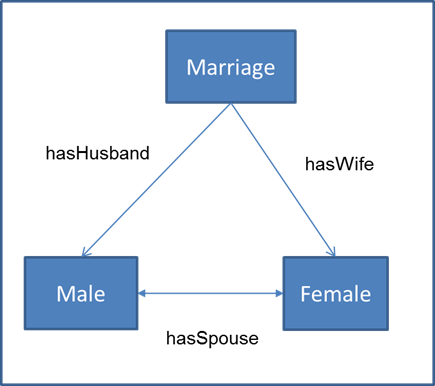Dear Henson,
The main problem is that the diagram is underspecified.
How would I know whether every marriage must have a husband?
How would I know how many husbands might be involved in a marriage?
Could a marriage have neither a husband nor a wife?
Etc.
Regards
Matthew West
Information Junction
Tel: +44 1489 880185
Mobile: +44 750 3385279
Skype: dr.matthew.west
matthew.west@xxxxxxxxxxxxxxxxxxxxxxxxx
http://www.informationjunction.co.uk/
http://www.matthew-west.org.uk/
This email originates from Information Junction Ltd. Registered in England and Wales No. 6632177.
Registered office: 2 Brookside, Meadow Way, Letchworth Garden City, Hertfordshire, SG6 3JE.
From: model-challenge-bounces@xxxxxxxxxxxxxxxx [mailto:model-challenge-bounces@xxxxxxxxxxxxxxxx] On Behalf Of henson graves
Sent: 08 May 2012 17:13
To: 'Modeling Benchmark Challenge'
Subject: [model-challenge] marriage template
In an earlier email I raised the question of how to embed the diagram below into FOL and OWL, as well as any additonal assumptions regarding the diagram and any axiomitization needed to ensure that any structure conforming to the diagram had the three individuals and relationships. One could describe what is being looked for as a template.
An FOL encoding might use unary predicates, Marriage(x), Male(x), and Female(x). One further assumption needed to obtain the template result would be that males and females are disjoint. While I am sure some will correctly point out that the assumption is false in the real world of people it is a tenable assumption for manufactured components with male and female ports and connections which can connect a female port to a male port. A bit of quality control can generally make this tenable.

Anybody have any further ideas where to go. If this is too easy, how about replacing Male and Female with components which have male and female ports.
Henson
